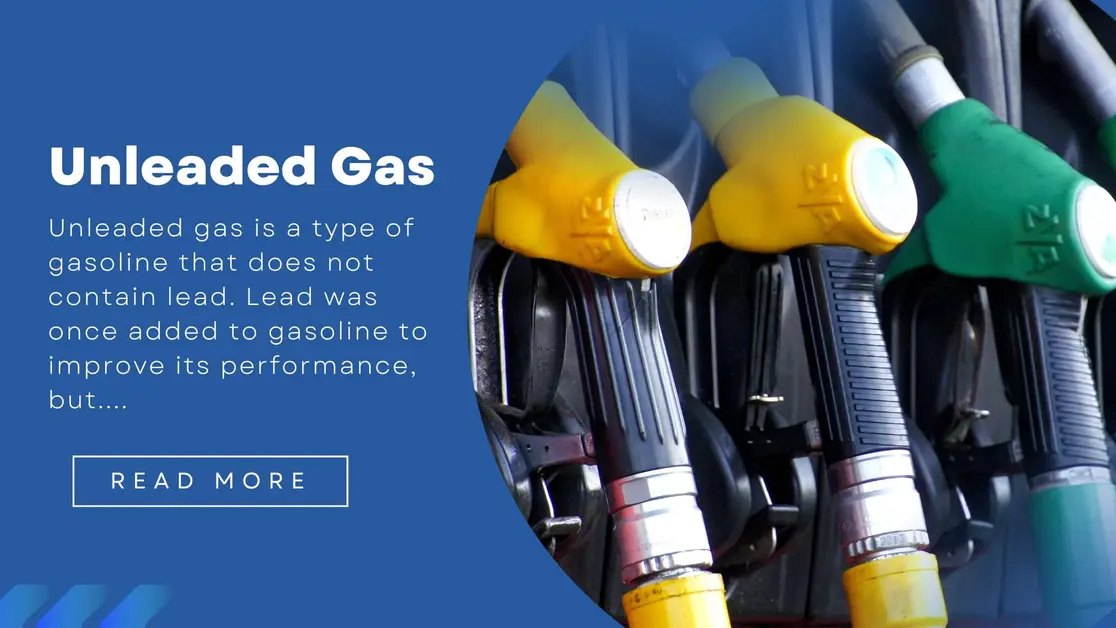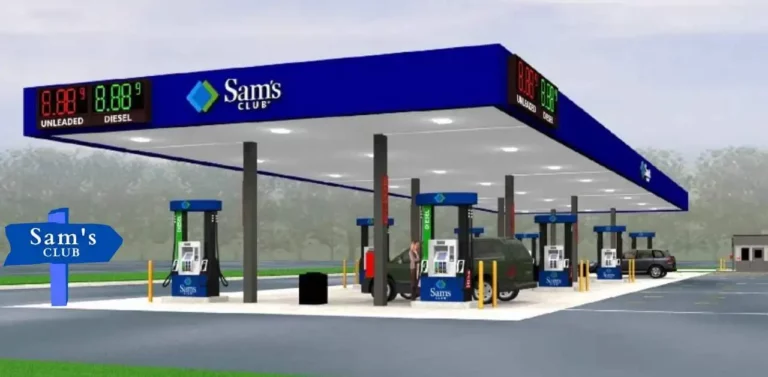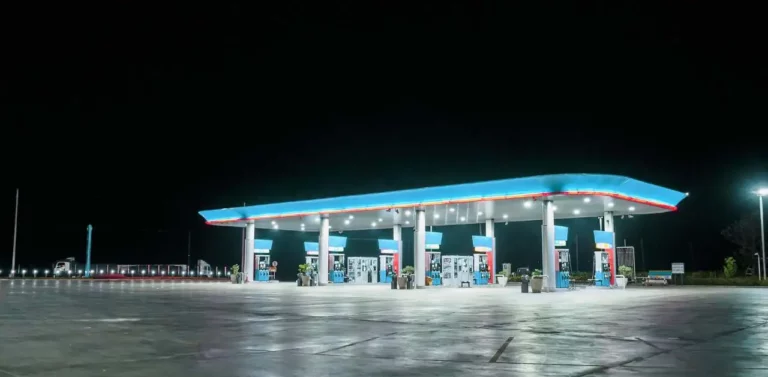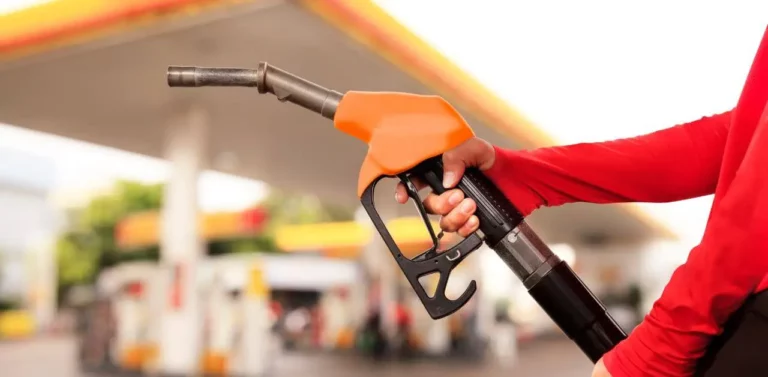Unleaded Gas: Fueling a Cleaner Drive
You’ve probably heard of unleaded gas, but have you ever wondered what it’s all about? If you’re like most people, you probably fill up your tank and go. But did you know there’s more to unleaded gas than meets the eye?
Unleaded gas is a type of gasoline that does not contain lead. Lead was once added to gasoline to improve its performance, but it was found to harm the environment and human health. Unleaded gas was introduced in the 1970s as a way to reduce pollution.
So, if you’re curious about unleaded gas, read on!
What is Unleaded Gas?
Alright, let’s start at the gas station. You’ve got your choice of fuels, and one of them is unleaded gas, also known as regular gas. Now, what sets it apart from the others? No lead. Yup, lead used to be a big player in gasoline, but it turned out to be a real villain, polluting the air and causing health issues. Unleaded gas is like the superhero version – it’s free of that harmful lead, making it a safer and greener option for your car.
In the good old days, lead was added to gasoline to boost engine performance. But guess what? That lead didn’t just disappear. It ended up in the air we breathe, creating a nasty cocktail of pollution. This harmed our environment and posed health risks, especially for kiddos. So, the switch to unleaded gas was like a breath of fresh air. No more lead meant less pollution, better air quality, and healthier lives.
The History of Unleaded Gas
Between ’70s and ’80s, there was a turning point in the world of gasoline. People started noticing that leaded gasoline was a major troublemaker, spewing nasty stuff into the air. Laws were put in place to phase it out, and in came unleaded gas. Catalytic converters, those nifty devices that help reduce harmful emissions, need unleaded to work their magic. So, not only did this shift make our cars happier, but it also did wonders for the environment.
Leaded gas wasn’t just bad for our health but also bad news for our engines. That lead liked to create deposits inside the engine, gunking up the works and leading to performance issues. It’s a win-win for both us and our trusty vehicles.
Today, unleaded gas is the most common type of gasoline used in cars. It is available at most gas stations. Leaded gas is no longer sold in the United States.
The Benefits of Unleaded Gas
But wait, there’s more! Unleaded gas isn’t just good for your car and the environment – it’s good for your wallet, too. Thanks to fewer deposits in your engine, your car’s fuel efficiency gets a boost. That means you’re spending less on gas in the long run. And since unleaded gas is the standard now, you won’t have to hunt for it – it’s everywhere!
The Drawbacks of Unleaded Gas
It’s not all sunshine and rainbows. Unleaded gas, while way better than its leaded counterpart still has disadvantages. It might pack less energy than some other fuels, which could slightly cut into your mileage. And hey, let’s not forget about greenhouse gases – unleaded does produce some. If your car is one of those high-performance champs, it might ask for pricier, higher-octane gas. Every rose has its thorn, right?
Okay, here’s the deal. Unleaded is like the all-rounder in the fuel game, but it might not be the ultimate champion in every category. While it’s fantastic for most vehicles and situations, there are some areas where it might be challenging.
First off, let’s talk about energy density. Unleaded doesn’t pack as much energy punch as other fuel types. What does that mean? Your mileage might not be as jaw-droppingly amazing as it could be with a higher-energy fuel. So, if you’re looking for a fuel that can give you that extra oomph in terms of miles per gallon, there might be better options.
Another point to consider is the greenhouse gas factor. We know that unleaded is cleaner than leaded gas, but it’s not completely innocent when it comes to producing those pesky greenhouse gases. While it’s a step in the right direction, it’s not the end-all solution to our planet’s environmental woes. So, while you’re doing a good thing by choosing unleaded gas, remember that there’s still work to be done on the green front.
If your car is a performance beast that demands a lot from its engine, it might ask for the high-octane stuff. While most vehicles are perfectly content with regular unleaded gas, these high-performance engines can be picky. They might perform better and more efficiently with that premium fuel. But hey, it’s a trade-off – more power might come with a slightly higher cost at the pump.
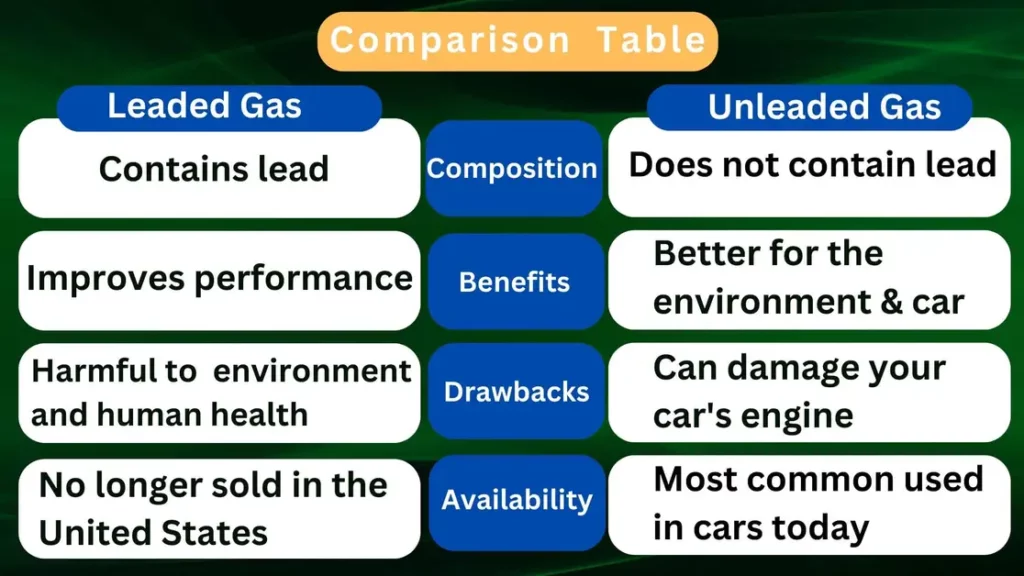
The Different Types of Unleaded Gas
Unleaded gas comes in different flavors, or rather, octane ratings. Octane is like the magic number that tells us how resistant the gas is to knocking. You’ve got the regular 87-octane stuff, and then there’s 89, 91, and beyond. Why do we care? Engines with a lot of oomph might need that high-octane stuff to perform at their best without making weird noises.
Now, let’s chat about octane ratings. You might have noticed those numbers on the gas pump, like 87, 89, or 91. They’re not just random digits – they’re actually crucial indicators of fuel performance. Octane rating is all about knock resistance. If your engine knocks, it’s not a happy camper. Knocking can lead to reduced performance, lower fuel efficiency, and even engine damage. So, you want your gas to have an octane rating that matches your engine’s needs.
Most everyday cars are designed to run just fine on regular 87-octane gas. But some vehicles, especially those high-performance engines or turbocharged beasts, crave more knock resistance. That’s where the higher-octane options come into play. The 89 or 91 octane fuels offer better knock protection, which can mean smoother engine performance, especially when you’re giving your car some extra beans.
How to Choose the Right Unleaded Gas for Your Car
Choosing gas isn’t just a random thing – there’s some science to it. Your car’s manual is like its personal rulebook. It tells you the recommended octane rating. Don’t go too low, or your engine might grumble. But also, don’t go too high unless your car is giving you an opera performance of knocking sounds.
Imagine you’re at the gas station, holding the nozzle, and you’re faced with a choice – which octane rating should you pick? Well, luckily, your car’s manual has the answer. Seriously, that little booklet is like your car’s best friend. Open it up, flip through the pages, and you’ll find the recommended octane rating.
So, take a peek at that manual, find out what your engine craves, and stick to it. If it says regular unleaded gas (87 octane), then you’re golden. If it asks for the premium stuff (89 or 91 octane), consider treating your car to the good stuff.
Where to Buy Unleaded Gas
You’re on the road, and your fuel gauge is giving you the evil eye. Where do you find that sweet, unleaded fuel? Everywhere! Gas stations of all shapes and sizes have it. If you’re looking for a more dependable option, Sams Club gas station could be a good choice.
Think of it this way: unleaded gas is like the rockstar of the fuel world. It’s the star of the show, the main act, and everyone wants it. Gas stations know this, so they make sure to have it ready and waiting for you.
And remember, you don’t have to play favorites. Unleaded gas is the standard, so you won’t need a treasure map to find it. Look for those familiar pump handles and prepare to refuel your ride. So, next time you’re hunting for unleaded gas, watch for those trusty pumps – they’re waiting to give your car the power it needs.
The Future of Unleaded Gas
As the world shifts gears towards a greener future, what’s in store for unleaded gas? Let’s take a peek into the crystal ball. While unleaded gas has been a game-changer in reducing emissions and promoting engine health, it’s not the end of the road. The automotive world is buzzing about electric cars, hydrogen fuel cells, and other alternative fuels.
Unleaded gas is a step in the right direction, but it’s not the final destination. As we become more conscious of our planet’s health, we are pressured to find even cleaner ways to power our vehicles. So, while unleaded gas will likely stick around for a while, the fuel landscape is evolving. The future might see a blend of traditional fuels like unleaded gas with the rise of electric and hydrogen-powered vehicles.
Conclusion
You’ve journeyed through the world of unleaded gas, from its humble beginnings to its role in today’s fuel landscape. Unleaded gas isn’t just about fueling your car – it’s about fueling a cleaner, healthier future from its cleaner burn and engine-friendly properties to its widespread availability. So, the next time you pull up to a gas station and reach for that unleaded nozzle, remember that you’re not just filling your tank – you’re taking a step towards a cleaner and more sustainable ride.

